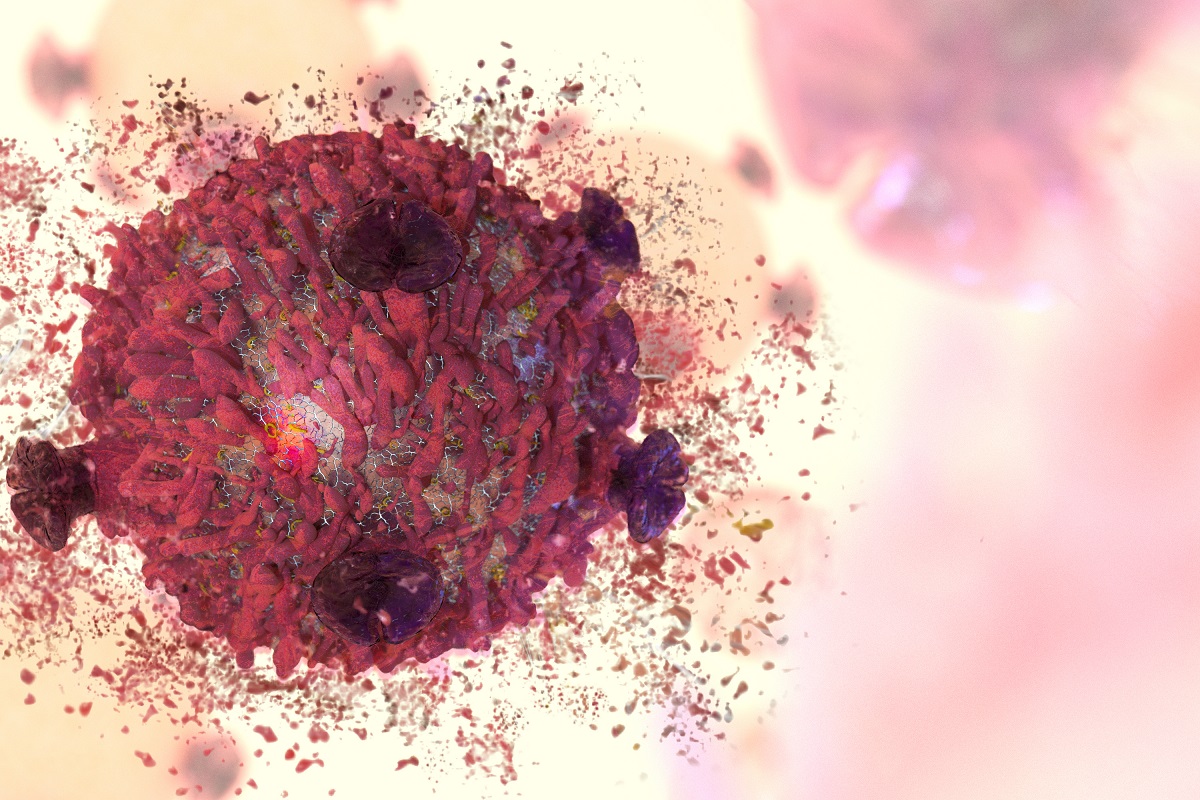KEY TAKEAWAYS
- The study examined CXCL5’s role in increasing PD-L1 expression and neutrophil chemotaxis to aid immune evasion in pts with LC.
- Researchers noticed that targeting CXCL5 could enhance the effectiveness of ICBs in LC immunotherapy.
Lung cancer (LC) remains 1 of the most prevalent cancer types worldwide, with a high mortality rate. Upregulation of programmed cell death protein 1 (PD-1) and its ligand (PD-L1) may represent a key mechanism for evading immune surveillance. Immune checkpoint blockade (ICB) antibodies against PD-1 or PD-L1 were widely used to treat patients (pts) with LC.
The mechanisms by which LC and neutrophils in the microenvironment sustain PD-L1 expression and impart stronger inhibition of CD8+ T cell function remain unclear.
Dantong Sun and the team aimed to assess the role of CXCL5 in promoting PD-L1 expression and neutrophil chemotaxis, thereby enhancing immune escape in LC.
They performed an inclusive analysis to investigate the role and underlying mechanism by which PD-L1+ LC and PD-L1+ neutrophils impede the function of CD8+ T cells. The methods employed included magnetic bead cell sorting, quantitative real-time polymerase chain reaction (RT-PCR), western blotting, enzyme-linked immunosorbent assays, confocal immunofluorescence, gene silencing, and flow cytometry.
In vivo, efficacy and safety studies were conducted using Non-obese Diabetes/severe combined immune deficiency (SCID/NOD) mice. Additionally, clinical and prognostic data were collected from 208 pts who underwent curative LC resection between 2017 and 2018.
They demonstrated that C-X-C motif chemokine ligand 5 (CXCL5) is markedly overexpressed in LC cells and positively correlated with poor prognosis in pts with LC. Mechanistically, CXCL5 activates the phosphorylation of the Paxillin/AKT signaling cascade, leading to the upregulation of PD-L1 expression and the formation of a positive feedback loop.
Moreover, CXCL5 attracts neutrophils, compromising CD8+ T cell-dependent antitumor immunity. These PD-L1+ neutrophils aggravate CD8+ T cell exhaustion following LC domestication. Combined treatment with anti-CXCL5 and anti-PD-L1 antibodies significantly inhibits tumor growth in vivo.
The study concluded that CXCL5 promotes immune escape through PD-L1 upregulation in LC and neutrophil chemotaxis via autocrine and paracrine mechanisms. CXCL5 may serve as a potential therapeutic target in synergy with ICBs in LC immunotherapy.
This study was funded by the Technological Innovation Project of CNNC Medical Industry Co. Ltd, the Suzhou Science and Technology Foundation, the Hospital Internal Research Foundation, the National Key Laboratory of Radiation Medicine and Auxiliary Protection, the National Key Laboratory of Neural and Tumorous Drug Development, the Jiangsu Key Research and Social Development Project, the Gusu Health Talent Program of Suzhou, the National Natural Science Foundation of China, the Key Scientific Program of Jiangsu Provincial Health Commission, and the Project of Medical New Technology Assistance of the Second Affiliated Hospital of Soochow University.
Source: https://pubmed.ncbi.nlm.nih.gov/39034411/
Sun D, Tan L, Chen Y, et al. (2024). “CXCL5 impedes CD8+ T cell immunity by upregulating PD-L1 expression in lung cancer via PXN/AKT signaling phosphorylation and neutrophil chemotaxis.” J Exp Clin Cancer Res. 2024 Jul 22;43(1):202. doi: 10.1186/s13046-024-03122-8. PMID: 39034411.



